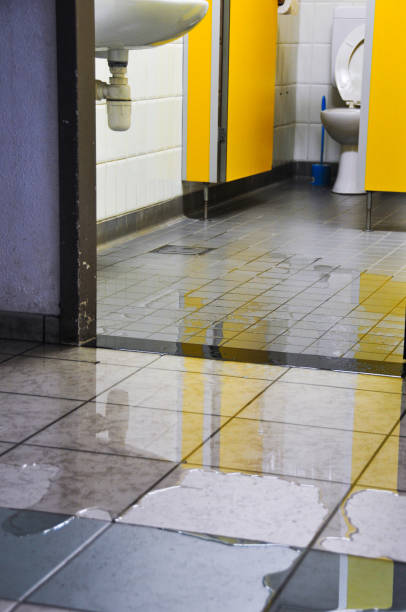How do you feel about How to Repair and Prevent Bathroom Water Damage??

Water damage frequently occurs in the bathroom due to the water utilized everyday. Sometimes, the damages could be a little mold from the shower. Various other times, it's massive damages on your flooring. Whatever it is, it is constantly excellent to understand the cause and also avoid it prior to it takes place.
This overview will certainly go through a few of the common root causes of water damage in the restroom. We will certainly likewise analyze what you can do to avoid these reasons from damaging your shower room. Let's dive in.
5 Typical Reasons For Water Damage in Bathrooms
These are the common factors you would certainly have water damage in your restrooms and also how you can detect them:
Ruptured or Leaking Pipes
There are lots of pipes bring water to various parts of your shower room. Some pipes take water to the bathroom, the sink, the faucets, the shower, and numerous various other areas. They crisscross the small location of the washroom.
From time to time, these pipelines can get corroded and burst. Other times, human activity might cause them to leakage. When this takes place, you'll discover water in the corners of your bathroom or on the wall.
To identify this, watch out for gurgling wall surfaces, molds, or mildew. Call an expert emergency plumbing technician to repair this when it takes place.
Fractures in your wall surface ceramic tilesv
Restroom wall surface tiles have actually been particularly made for that function. They secure the wall surface from dampness from individuals taking showers. Nonetheless, they are not undestroyable.
Often, your restroom wall ceramic tiles split and allow some wetness to leak into the wall. This might potentially destroy the wall if you do not take any activity. If you see a split on your wall surface ceramic tiles, fix it quickly. Do not wait until it destroys your wall.
Overflowing bathrooms and sinks
As humans, in some cases we make mistakes that might trigger some water damage in the shower room. As an example, leaving your sink faucet on might trigger overflowing and damage to other parts of the bathroom with dampness.
Likewise, a defective commode could trigger overflowing. For example, a busted toilet manage or various other parts of the cistern. When this occurs, it can harm the flooring.
As quickly as you notice an overflowing sink or bathroom, call a plumber to aid manage it quickly.
Roof Leaks
Often, the problem of water damage to the restroom may not originate from the washroom. As an example, a roof leak might trigger damage to the bathroom ceiling. You can detect the damages done by considering the water discolorations on the ceiling.
If you find water discolorations on your ceiling, examine the roofing to see if it's damaged. After that, call a specialist to aid fix the problem.
Excess Wetness
It's trendy to have that long shower and splash water while you dance around and act like you're executing, yet in some cases these acts could cause water damage to your bathroom.
Splashing water around can create water to go to corners as well as form molds. View how you spread out excess dampness around, and when you do it, clean it up to prevent damages.
Conclusion
Water damage to your washroom can be aggravating. Nevertheless, you can handle it if you protect against several of the causes mentioned in this overview. Call an expert emergency situation plumber if you discover any extreme damages.
How to Prevent Water Damage in Your Bathroom?
Water damage repair is an expensive, meticulous, and lengthy process. Unfortunately, bathrooms are the most susceptible rooms to water damage due to toilets, showers, and sinks. Pipes and fixtures wear out over time and are not immune to damage. But all is not lost, as there are ways to prevent water damage from occurring in your bathroom.
Check Your Plumbing
Nothing lasts forever, especially pipes, which can rust and begin leaking over time. You should periodically conduct pipe inspections and pay attention for any musty smells or water stains that may indicate you need water damage repair. Here are some things to check:
Frequently test valves for your toilet, shower, and sink to ensure they are properly working. Check faucet supply lines hidden under vanities and replace when needed. Replace cracked or deteriorating caulking along sinks, tubs, and showers. If you notice a clog in your sink, call in a professional. Since you can’t check the pipes in the wall, keep an eye out for stains, drywall bubbling, musty smells, and excess moisture; if the bathroom is on a second level, check the ceiling of the room directly below for these signs. Don’t Overwork Your Toilet
One of the most common reasons bathrooms need water damage repair is due to overflowing toilets. Save yourself the hassle of cleanup by being mindful and not pushing your toilet to extreme limits. If you have young children, it is especially important to keep an eye on them when they are in the bathroom and to teach them how to avoid clogging the toilet. Here are some more tips to help prevent your toilet from overflowing:
If you have a septic tank, only use septic-safe toilet paper Do not flush anything down the toilet besides toilet paper; items like diapers and sanitary napkins will clog the piping Pay attention to your toilet’s water level: If it’s low, it could mean it is partially clogged or that there is a crack in the toilet bowl https://www.alure.com/home-improvements-blog/resources/how-to-prevent-water-damage-in-your-bathroom

As a fervent reader about How to Repair and Prevent Bathroom Water Damage?, I imagined sharing that excerpt was a great idea. You should take the opportunity to distribute this write-up if you liked it. Thanks so much for taking the time to read it.
Top Article
 Brian Bonsall Then & Now!
Brian Bonsall Then & Now! Jason J. Richter Then & Now!
Jason J. Richter Then & Now! Kirk Cameron Then & Now!
Kirk Cameron Then & Now! Michael J. Fox Then & Now!
Michael J. Fox Then & Now! Michelle Pfeiffer Then & Now!
Michelle Pfeiffer Then & Now!